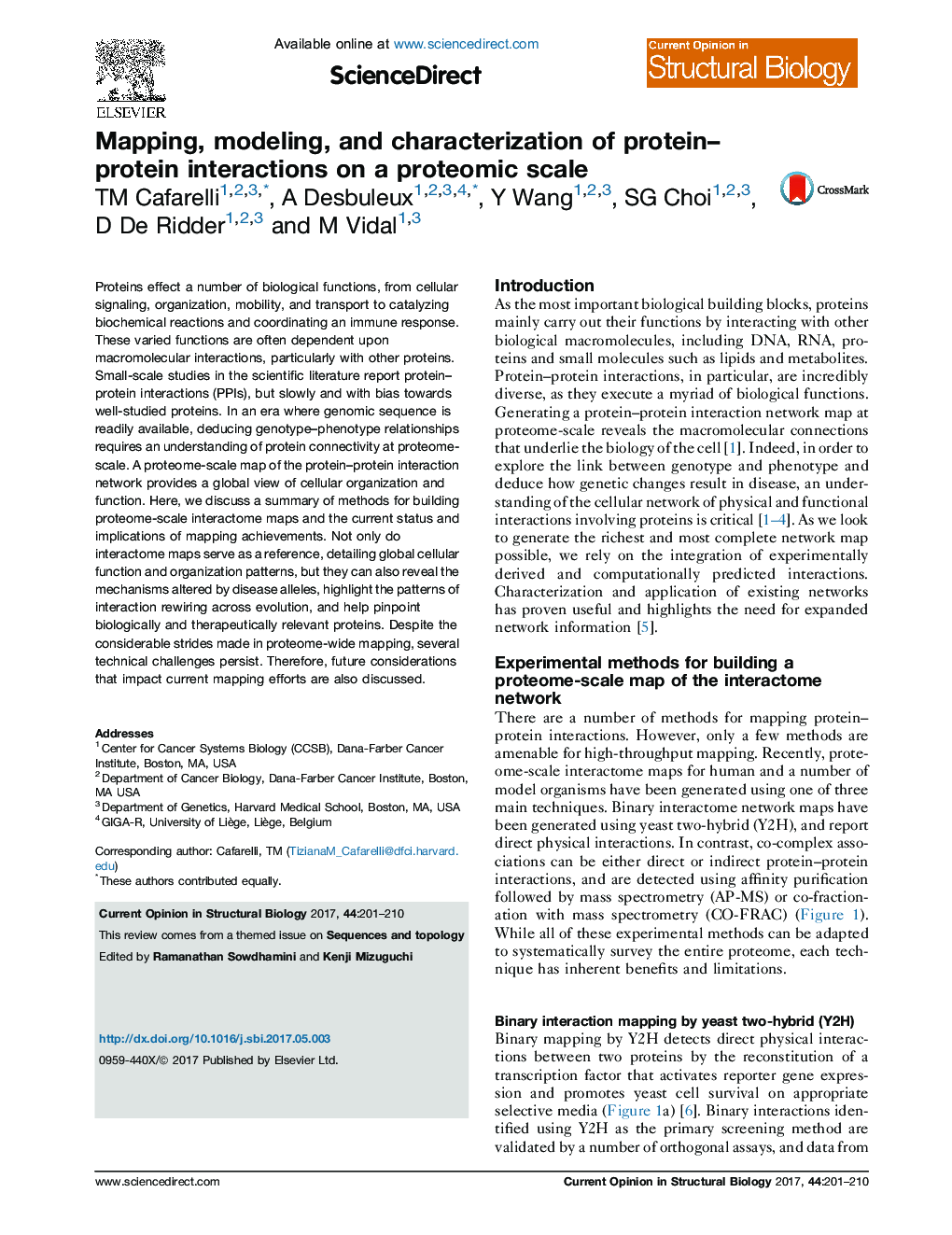| Article ID | Journal | Published Year | Pages | File Type |
|---|---|---|---|---|
| 5510871 | Current Opinion in Structural Biology | 2017 | 10 Pages |
Abstract
Proteins effect a number of biological functions, from cellular signaling, organization, mobility, and transport to catalyzing biochemical reactions and coordinating an immune response. These varied functions are often dependent upon macromolecular interactions, particularly with other proteins. Small-scale studies in the scientific literature report protein-protein interactions (PPIs), but slowly and with bias towards well-studied proteins. In an era where genomic sequence is readily available, deducing genotype-phenotype relationships requires an understanding of protein connectivity at proteome-scale. A proteome-scale map of the protein-protein interaction network provides a global view of cellular organization and function. Here, we discuss a summary of methods for building proteome-scale interactome maps and the current status and implications of mapping achievements. Not only do interactome maps serve as a reference, detailing global cellular function and organization patterns, but they can also reveal the mechanisms altered by disease alleles, highlight the patterns of interaction rewiring across evolution, and help pinpoint biologically and therapeutically relevant proteins. Despite the considerable strides made in proteome-wide mapping, several technical challenges persist. Therefore, future considerations that impact current mapping efforts are also discussed.
Related Topics
Life Sciences
Biochemistry, Genetics and Molecular Biology
Biochemistry
Authors
TM Cafarelli, A Desbuleux, Y Wang, SG Choi, D De Ridder, M Vidal,
